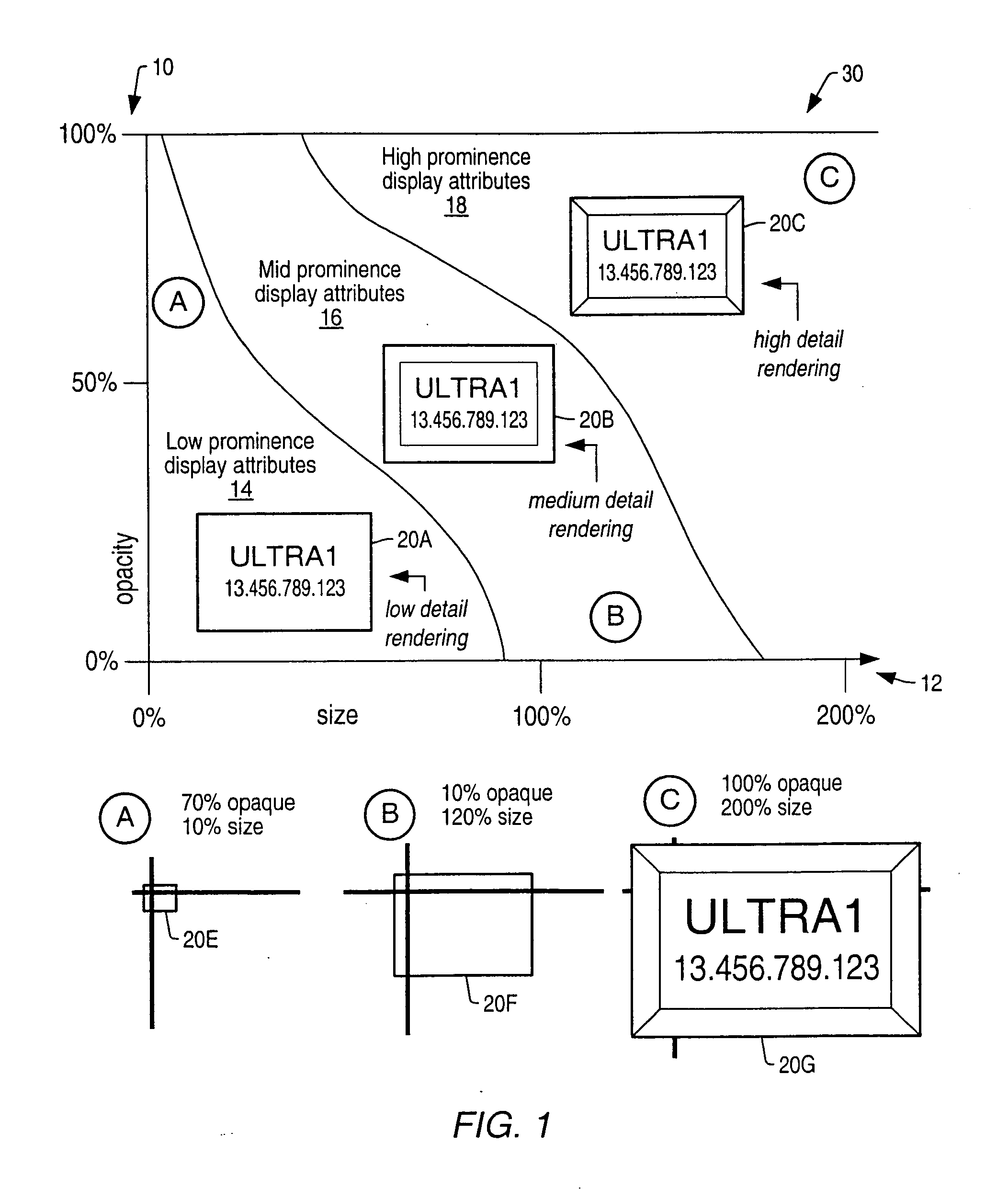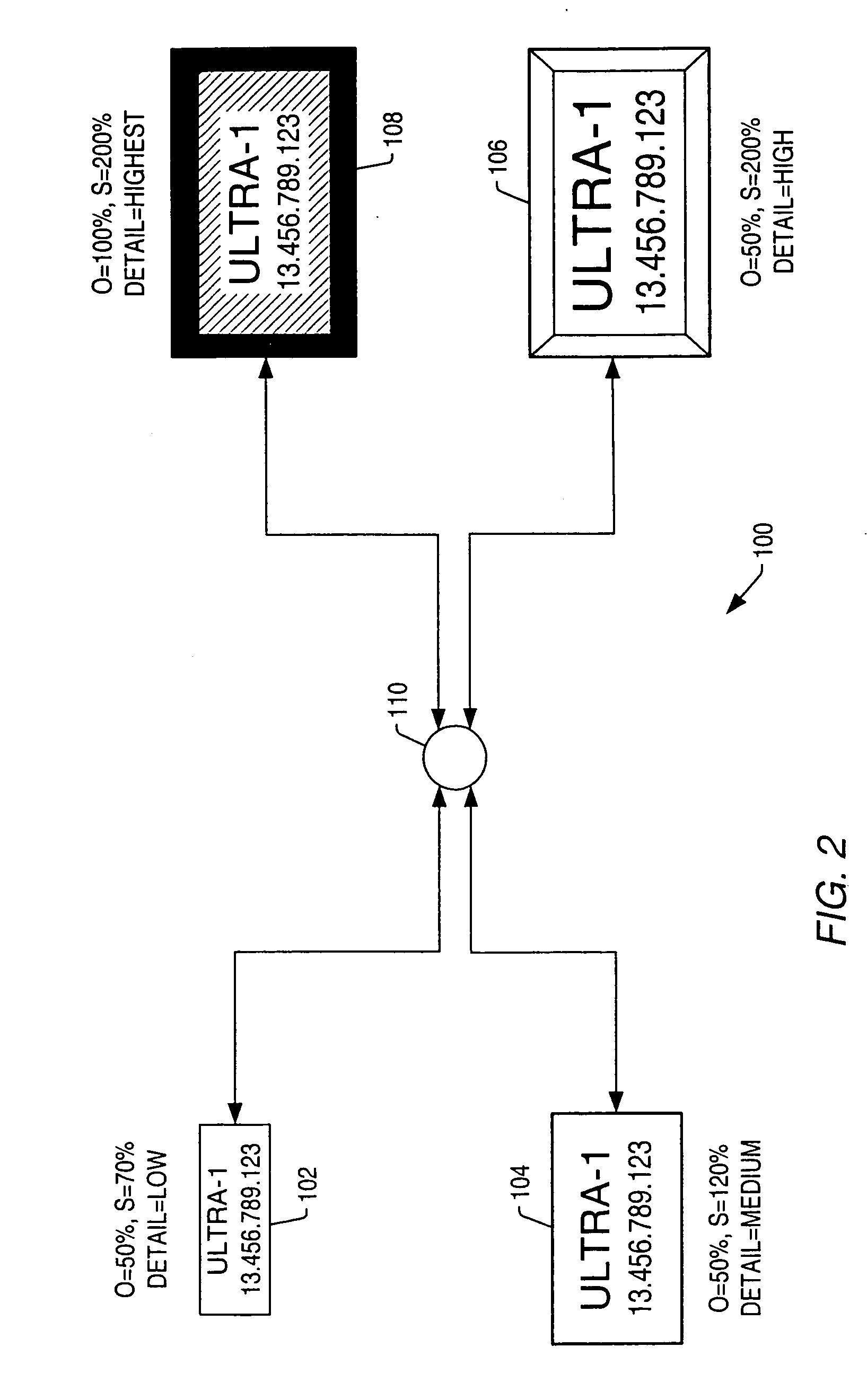Stationary semantic zooming
a semantic zooming and zooming technology, applied in the field of computer graphics, can solve the problems of displaying ever increasing amounts of information, requiring smaller displays, and system designers facing the difficult task of having to display increasing amounts of information on smaller screens, so as to reduce the level of detail, improve the efficiency of graphics systems, and improve the effect of detail
- Summary
- Abstract
- Description
- Claims
- Application Information
AI Technical Summary
Benefits of technology
Problems solved by technology
Method used
Image
Examples
Embodiment Construction
[0021] Turning now to FIG. 1, details of one embodiment of a method for stationary semantic zooming are shown. As noted above, when an object is drawn as small, highly transparent, or in an otherwise non-prominent state, a highly detailed rendering may be both computationally inefficient and a distraction for the user. In most modern graphic systems, an object being displayed may have a number of different attributes that affect its rendering. For example, these attributes may include not only position on the display, but also non-positional attributes (also referred to as non-spatial attributes) such as opacity, size, tint, drawing order, blinking rate, and other features. Some objects may be identified or tagged as having text labels or highlights. Other objects may be tagged as the virtual source for auditory information.
[0022] Together, these non-spatial attributes may define an N-dimensional display space. Portions of this display space may correspond to highly prominent regio...
PUM
 Login to View More
Login to View More Abstract
Description
Claims
Application Information
 Login to View More
Login to View More - R&D
- Intellectual Property
- Life Sciences
- Materials
- Tech Scout
- Unparalleled Data Quality
- Higher Quality Content
- 60% Fewer Hallucinations
Browse by: Latest US Patents, China's latest patents, Technical Efficacy Thesaurus, Application Domain, Technology Topic, Popular Technical Reports.
© 2025 PatSnap. All rights reserved.Legal|Privacy policy|Modern Slavery Act Transparency Statement|Sitemap|About US| Contact US: help@patsnap.com



